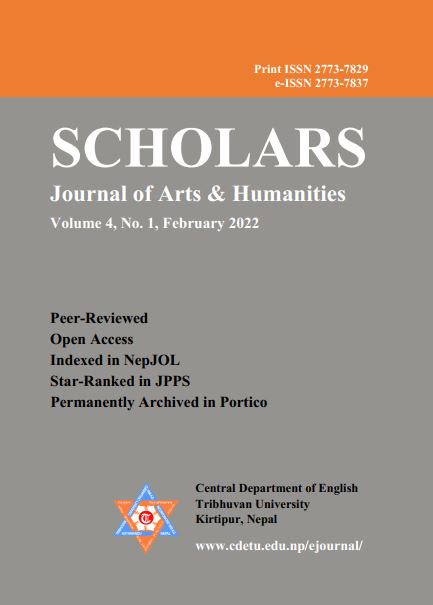The Op-ed Articles on the Millennium Challenge Corporation (MCC) Project: A Rhetorical Analysis
DOI:
https://doi.org/10.3126/sjah.v4i1.43055Keywords:
MCC, persuasion, pentad, motive, scene-purpose ratio, new rhetoricAbstract
This paper attempts to make a rhetorical analysis of six op-ed articles on the Millennium Challenge Corporation (MCC) project, which are published online in the English daily newspapers of Nepal. This study has discussed about how the authors in each article have used the language and context as a medium to persuade the readers in favour or in opposition of the MCC project and also to identify the rhetorical techniques that are used to accomplish their purpose. The rhetorical analysis is supported by the theoretical ideas of Aristotle and Kenneth Burke. In particular, Burke's concept of dramatism pentad has been used to find the answer of what was done (act), when or where it was done (scene), who did it (agent), how he did it (agency) and why (purpose). The findings of the study show that these authors have used effective rhetorical techniques to present the same situation in different ways, using their percussive appeals in their writing and the motive to bring the readers under their rhetorical influence. This study further found that the authors have used logos (logical reasoning) as the major tool to support the MCC project and have mainly used the scene-purpose ratio as a rhetorical tool to push the anti-MCC ideas. Finally, the study concludes that tracing out the relationship between the pentadic elements helps the critical readers to find the specific motives of the authors and also identify the rhetorical techniques used in their writing.
Downloads
Downloads
Published
Versions
- 2022-02-18 (2)
- 2022-02-13 (1)
How to Cite
Issue
Section
License
Copyright (c) 2022 Central Department of English, Tribhuvan University and Authors

This work is licensed under a Creative Commons Attribution 4.0 International License.
© Central Department of English, Tribhuvan University and Authors




